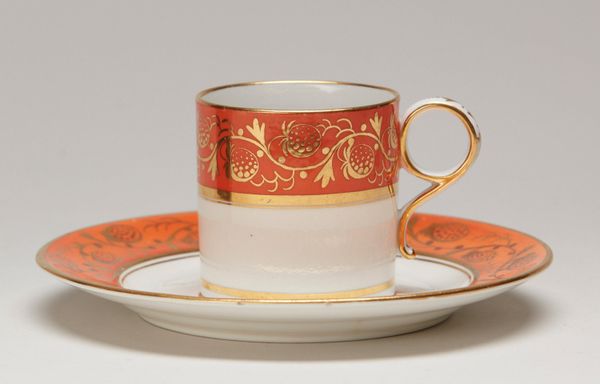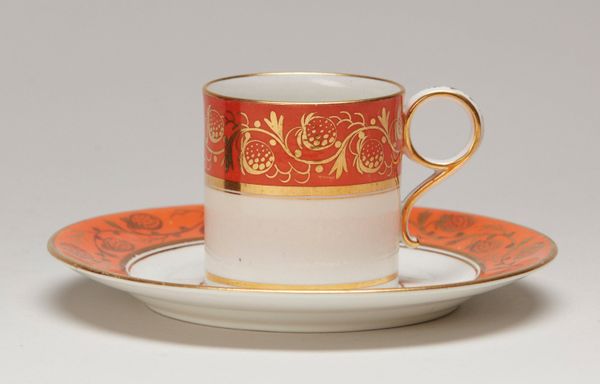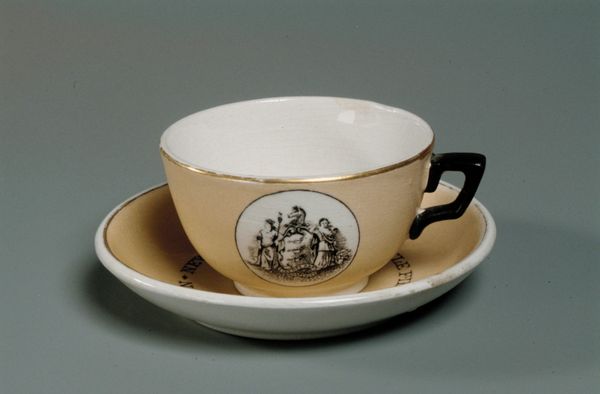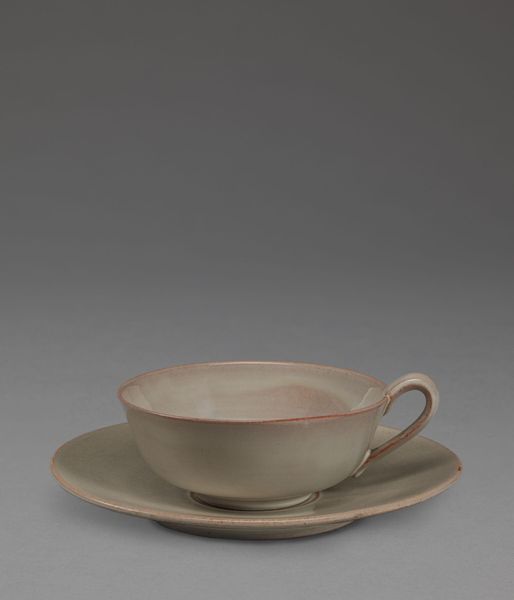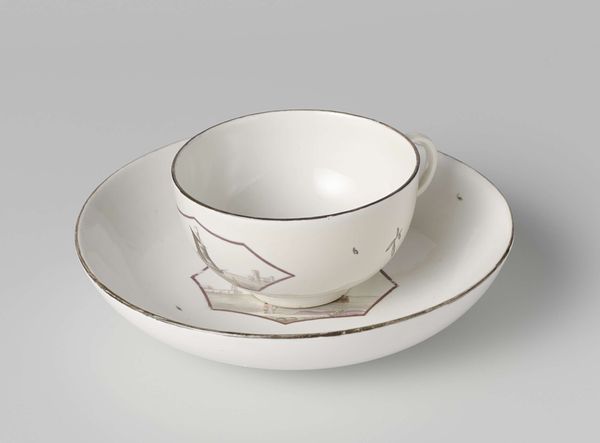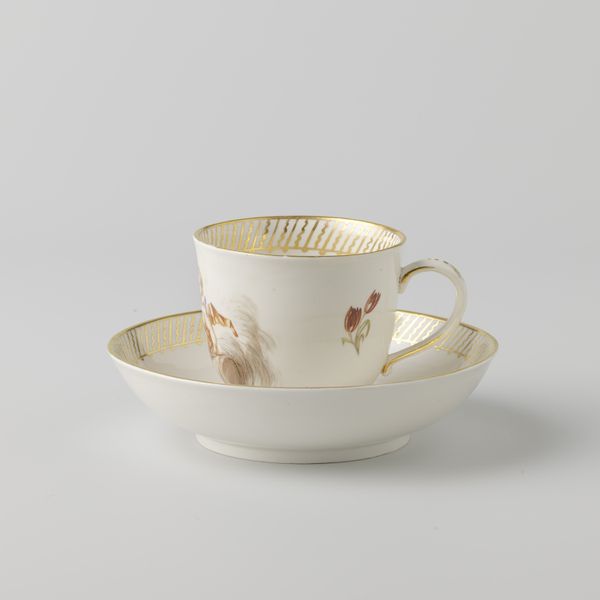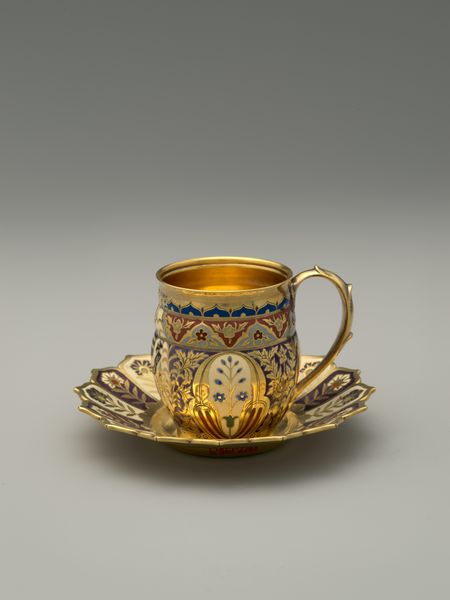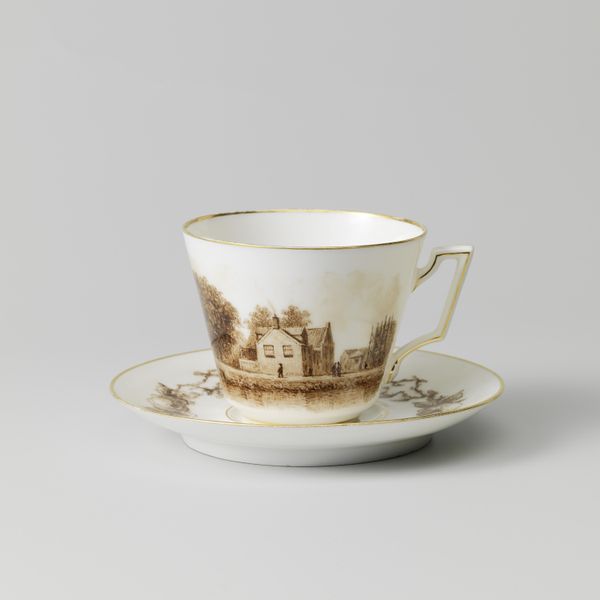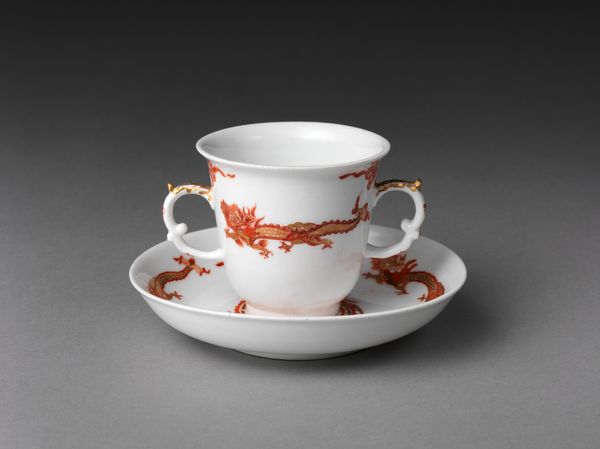
ceramic, porcelain
#
portrait
#
neoclacissism
#
greek-and-roman-art
#
ceramic
#
porcelain
#
figuration
#
decorative-art
Dimensions: height 6.4 cm, diameter 7.2 cm, width 9 cm, height 2 cm, diameter 13.6 cm
Copyright: Rijks Museum: Open Domain
This cup and saucer, known as a trembleuse, were made of porcelain by the Kaiserliche Porzellanmanufaktur. This piece presents us with an interesting interplay between form and historical reference. We see how 19th-century European manufacturers looked back to classical antiquity for inspiration, both in the shape of the cup and saucer and in the painted decoration. The image creates meaning through the visual codes that signal "classical." Think about the figures in their draped robes or the geometric motifs around the rim. These would have been instantly recognizable to consumers at the time. We could ask, what does this reference to the ancient world tell us about the aspirations and self-image of the society that produced and consumed this object? Was it self-consciously emulating what it imagined to be the refined tastes of the past? Was it meant for everyday use, or was it meant to be displayed and admired? Careful research into the history of porcelain manufacture, design trends, and the social history of tea-drinking could help us to understand this seemingly simple object more fully.

